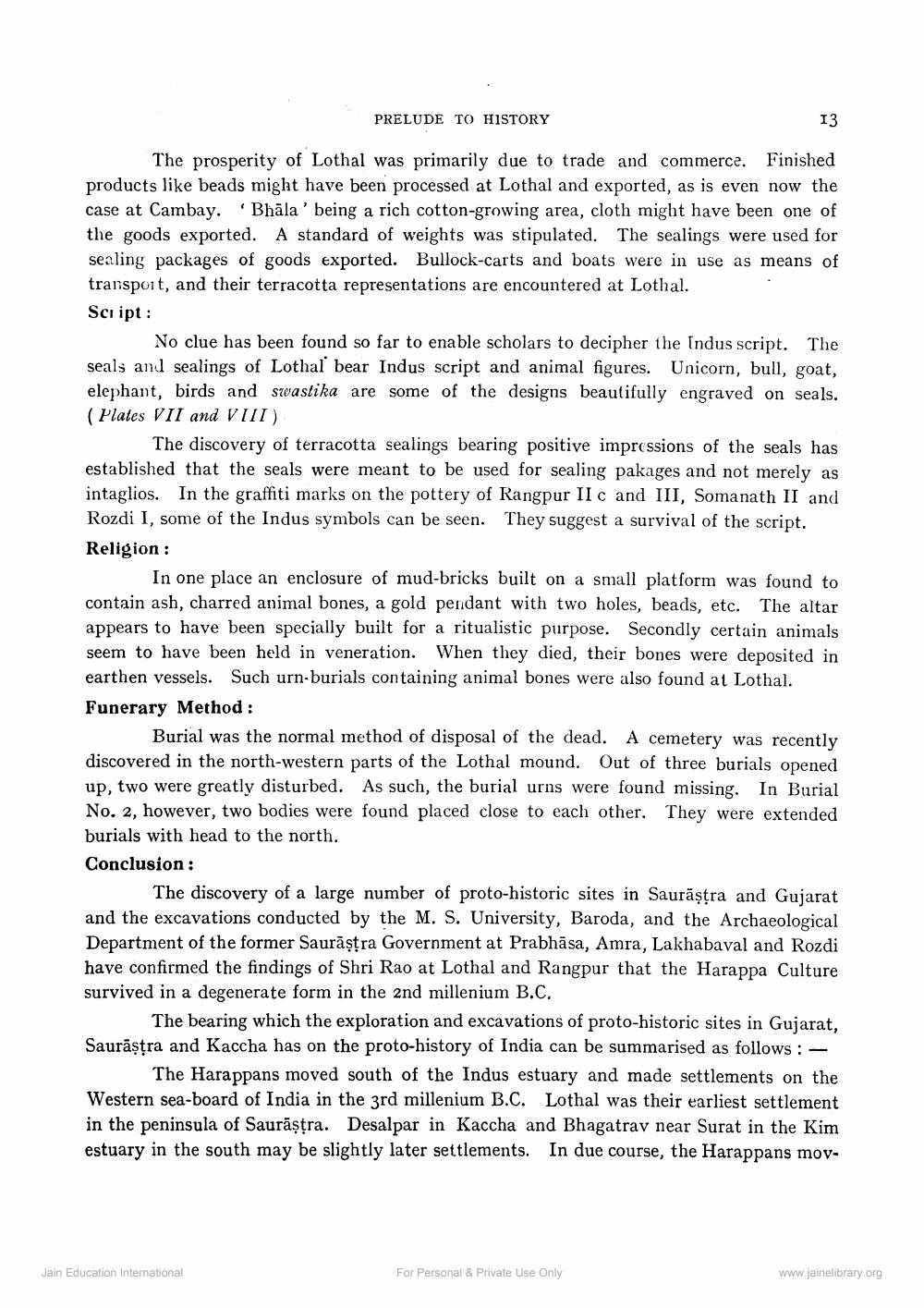________________
PRELUDE TO HISTORY
13
The prosperity of Lothal was primarily due to trade and commerce. Finished products like beads might have been processed at Lothal and exported, as is even now the case at Cambay. 'Bhāla' being a rich cotton-growing area, cloth might have been one of the goods exported. A standard of weights was stipulated. The sealings were used for sealing packages of goods exported. Bullock-carts and boats were in use as means of transport, and their terracotta representations are encountered at Lothal. Script :
No clue has been found so far to enable scholars to decipher the indus script. The seals and sealings of Lothal bear Indus script and animal figures. Unicorn, bull, goat, elephant, birds and swastika are some of the designs beautifully engraved on seals. (Plates VII and VIII)
The discovery of terracotta sealings bearing positive impressions of the seals has established that the seals were meant to be used for sealing pakages and not merely as intaglios. In the graffiti marks on the pottery of Rangpur II c and III, Somanath II and Rozdi I, some of the Indus symbols can be seen. They suggest a survival of the script. Religion :
In one place an enclosure of mud-bricks built on a small platform was found to contain ash, charred animal bones, a gold pendant with two holes, beads, etc. The altar appears to have been specially built for a ritualistic purpose. Secondly certain animals seem to have been held in veneration. When they died, their bones were deposited in earthen vessels. Such urn-burials containing animal bones were also found at Lothal. Funerary Method:
Burial was the normal method of disposal of the dead. A cemetery was recently discovered in the north-western parts of the Lothal mound. Out of three burials opened up, two were greatly disturbed. As such, the burial urns were found missing. In Burial No. 2, however, two bodies were found placed close to each other. They were extended burials with head to the north. Conclusion:
The discovery of a large number of proto-historic sites in Saurāştra and Gujarat and the excavations conducted by the M. S. University, Baroda, and the Archaeological Department of the former Saurāṣtra Government at Prabhāsa, Amra, Lakhabaval and Rozdi have confirmed the findings of Shri Rao at Lothal and Rangpur that the Harappa Culture survived in a degenerate form in the 2nd millenium B.C.
The bearing which the exploration and excavations of proto-historic sites in Gujarat, Saurāşțra and Kaccha has on the proto-history of India can be summarised as follows:
The Harappans moved south of the Indus estuary and made settlements on the Western sea-board of India in the 3rd millenium B.C. Lothal was their earliest settlement in the peninsula of Saurāṣtra. Desalpar in Kaccha and Bhagatrav near Surat in the Kim estuary in the south may be slightly later settlements. In due course, the Harappans mov
Jain Education Intemational
For Personal & Private Use Only
www.jainelibrary.org




